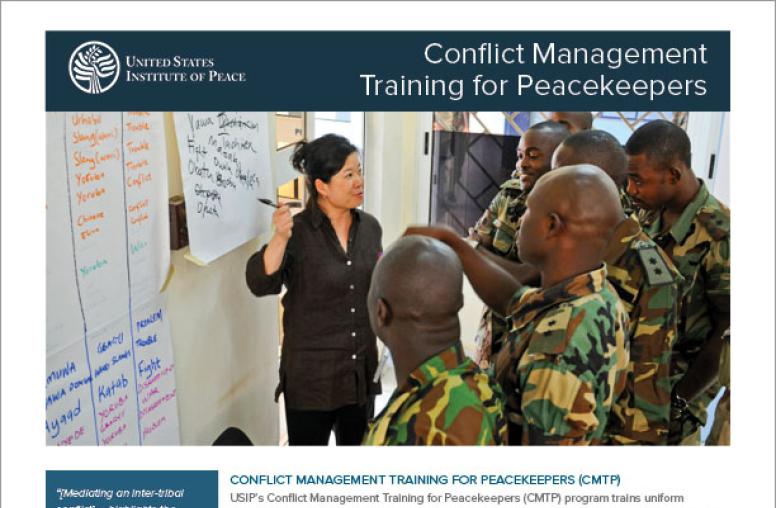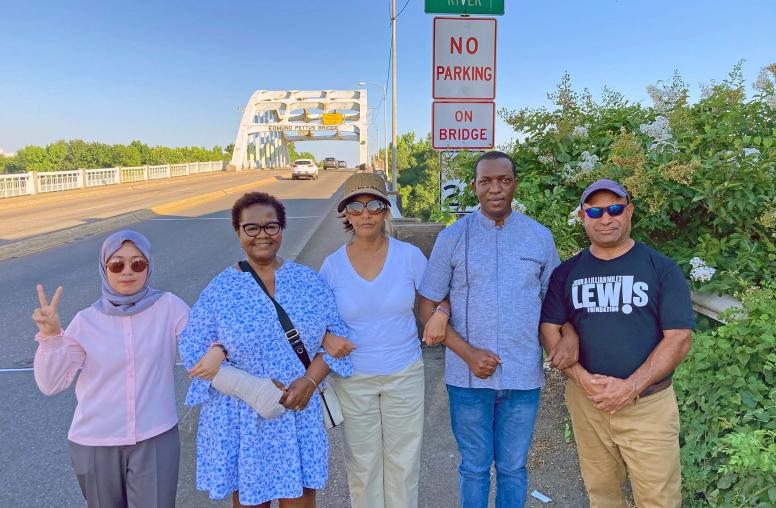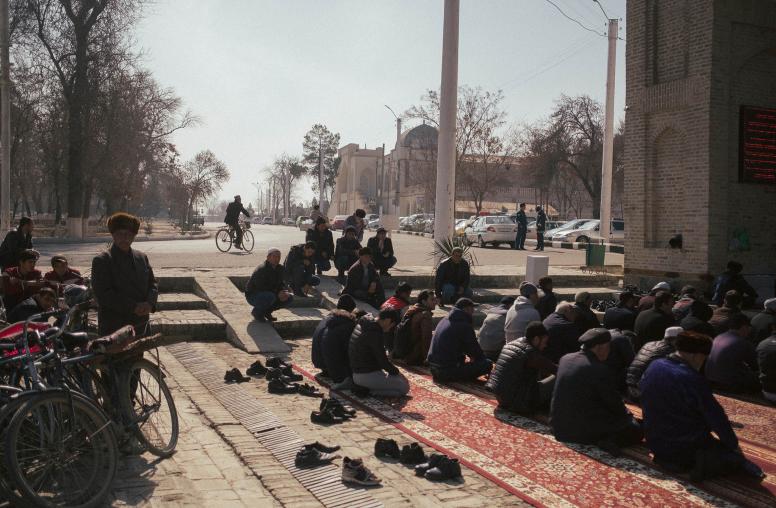Let's be honest, “peace” is a word that sometimes gets a bad rap. People attach skeptical connotations to it. It can sound idealistic, even utopian when compared to the violence we see in the news every day.
But peace is also something very practical. It is urgent, and something we can all choose to work toward.
This is why the U.S. Institute of Peace created the Peace Day Challenge four years ago as part of the activities to mark our 30th anniversary.

The basic idea was to take the International Day of Peace on September 21, which has been an internationally recognized date since 1981, and turn it into a day of action—first, by raising the profile of the day, and second, by encouraging people to do something for peace in their own contexts, and to share on social media using #peacedaychallenge.
We wanted to affirm peace as a real and practical alternative to violence; to make clear that peace is possible if we each commit to doing something (big or small) and then spreading the word to others and sustaining it beyond that day.
Now four years in, the Peace Day Challenge has achieved real reach and impact, spreading to tens of millions of people on social media, here in the U.S. and in over 135 countries around the world.

For those among USIP’s partners and networks, it has provided an opportunity to amplify their own work for peace—from Afghanistan to South Sudan to Colombia. On or around September 21, they organize events, mobilize others to take a stand for peace, and generate videos and photos that spread messages of peacebuilding in action.
Check out how a community of youth creatives in #SouthSudan is celebrating #PeaceDay2018 and taking the #PeaceDayChallenge! @AnatabanSS has launched its #BelednaAwel campaign encouraging citizens to stand together in putting their country first. pic.twitter.com/AoLQIyUubR— U.S. Institute of Peace (@USIP) September 21, 2018
Visiting students & prof. of #Nangarhar, Kandahar, Al-Beroni of Kapisa & Shiekh Zahid of Khost & Herat universities played friendly cricket match with Herat cricket team.Thanks Mr. Niazi,head of Herat CB to celebrate international peace day. #PeaceDayChallenge @USIP pic.twitter.com/cVGqYL4K2V
— Shahmahmood Miakhel (@S_MIAKHEL) September 24, 2018
Closer to home, we’ve put a real focus on engaging American schools—this year we partnered with Scholastic to create a Poster Teaching Guide, which was distributed to 50,000 middle school classrooms across the U.S. to support educators and their students in taking action on the day and continuing their learning and engagement year-long.
I enjoyed engaging w/ students from Centennial High School @wcsCHS in Tennessee on International Day of Peace. Excellent questions & ideas on the state of peace & conflict, refugees/IDPs, youth activism, & US role in #Iraq, #Syria, & the Middle East. @USIP #PeaceDayChallenge pic.twitter.com/qqAhXUm7Qk
— Sarhang Hamasaeed (@sarhangsalar) September 21, 2018
We did THIS for PEACE! #DoItForPeace @KidsforPeace #PeaceDayChallenge #studentsgrowhere pic.twitter.com/W4g7aSsWv2
— StonyBrookES - Official Account (@StonyBrookES) September 21, 2018
In addition, USIP worked directly with schools in many states—we connected USIP experts to classrooms for virtual conversations with students, and we shared ideas for action that inspired lesson plans and creative activities from elementary schools through universities. This investment in reaching and educating young Americans has long been a USIP priority, and the Peace Day Challenge provides a great vehicle for that effort.
Each year we also engage a large number of prominent organizations and individuals—from the State Department, to individual members of Congress, to leaders like His Holiness the Dalai Lama, to many big non-governmental organizations. They have all helped to raise the profile of the day and spread the word.
Problems will always arise, but we need to address them differently. We need to engage in dialogue to resolve them rather than resorting to the use of force. #PeaceDayChallenge
— Dalai Lama (@DalaiLama) September 21, 2018
And, this year USIP had a special opportunity to raise awareness of the Peace Day Challenge at Nationals Park in Washington, D.C. on the evening of September 21 with promotional activities during the pre-game period.

All told, we’ve reached almost 160 million people over four years, an impressive number. But there’s a deeper story here, too, about what resonates.
For an American public audience, the Peace Day Challenge is a moment when they can connect with us and be part of something bigger than themselves.
For schools, it falls early enough in the school year that it can help set a tone and elevate peace as a practical priority for the months ahead.
For small organizations in cities and towns across the country, it gives them a hook to organize events, use USIP’s resources, and have conversations about global issues of peace and conflict that matter to them.
And for USIP, the umbrella campaign we’ve created with the Peace Day Challenge is a signature way in which we demonstrate this country’s commitment to peace in the spirit of our mission from Congress.



